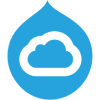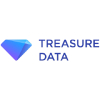Top 20 Customer Data Platforms (CDP) Platforms to Help You Achieve a Single Customer View
In today's competitive business landscape, providing exceptional customer experiences has become essential for sustained success. To achieve this, companies need to leverage the vast amounts of customer data they collect and turn it into actionable insights. This is where customer data platforms (CDP) come into play. CDPs help organizations unify customer data from various sources, analyze it, and use it to deliver personalized experiences across channels. In this article, we'll take a look at the top 10 CDP platforms that can help enhance your customer experience.

Eliminate silos to unify data and gain a complete understanding of your customer. Acquia CDP gives you insights to engage, connect, and convert.
Visit website➔
AIQ makes every team member a CX champion by bringing order to data chaos. Use the full customer profile to power every customer experience.
Visit website➔
Until someone invents mind reading, there’s Adobe's Real-Time CDP. Real-Time CDP collects B2C and B2B data from across systems and unifies it into real-time profiles ready for activation across any channel.
Visit website➔
Turn messy customer data into business growth, powered-up teams, and happy customers. Power meaningful customer experiences and accelerate growth by building a unified data foundation.
Visit website➔
BlueConic puts unified, privacy-compliant first-party data into the hands of business teams that want to transform the customer relationship and unleash growth.
Visit website➔
Get a 360° view of every single customer, intuitively build tailor-made predictive audiences and activate them across all systems and channels with our Customer Data and Prediction Platform.
Visit website➔
FirstHive is a full-stack Customer Data Platform that enables consumer marketers and brands to take control of their first-party data from all sources, both online and offline, and enables highly personalized campaigns that drive conversions.
Visit website➔
Lemnisk’s real-time marketing automation built on an intelligent & secure Customer Data Platform increases conversions, retention & growth for enterprises.
Visit website➔
As the only CDP to natively support all customer touchpoints, we make your data available to every team to inform customer insight and engagement.
Visit website➔
Lytics is the customer data platform (CDP) of choice for the next generation of customer-centric businesses. For the forward-thinking changemakers.
Visit website➔
Meiro Customer Data Platform helps brands to unify and safe-guard their customers’ data and use machine learning to drive ethically personalized marketing and enhance customer experience while driving profitability.Meiro
Visit website➔
Combine real-time data quality and governance protections with AI-powered insights and predictions. Only with the mParticle Customer Data Platform.
Visit website➔
Ometria is the first and only CDXP built for retailers. Get your campaigns to market faster, uncover revenue opportunities for sustainable growth, and build experiences that forge long-term customer connection.
Visit website➔
Combine customer data from online, offline, and third-party sources to create a single, dynamic, real-time view of each customer. Oracle Unity Customer Data Platform (CDP) applies machine learning to prescribe the best next action within any existing business processes.
Visit website➔
From individual consumers to multiple business accounts, customers demand relevant, personalized engagements. With SAP Customer Data Platform, you can surface insights in real time across the enterprise to deliver winning engagements, boost revenue, and drive growth.
Visit website➔
Segment collects events from your web & mobile apps and provides a complete data toolkit to every team in your company.
Visit website➔
The ability to ingest, cleanse, and augment huge quantities of data from multiple sources is at the very heart of the SessionM Platform.
Visit website➔
Squeezely gives you unmatched flexibility to build on your next big idea. Providing you with high-quality customer data and the tools you need to understand and build advanced buyer journeys and personalisations.
Visit website➔
Tealium AudienceStream CDP comes with patented visitor stitching technology that constructs highly accurate, comprehensive and actionable customer profiles. Use the data within these profiles to define high or low value customers, key engagement insights, or milestones that can then be used to create audiences.
Visit website➔
Customer Data Cloud unites operations, service, sales, and marketing teams around the same unified customer profiles. When every department has the data and insights they need, they can work together to create connected customer experiences and improve business value.
Visit website➔Good to know...
What is a Customer Data Platform (CDP)?
CDP stands for Customer Data Platform. It is a software platform designed to collect, unify, and manage customer data from various sources, such as websites, mobile apps, customer relationship management (CRM) systems, social media, and other marketing channels.
A CDP creates a unified customer profile by stitching together all the data points related to a customer, such as demographic information, browsing behavior, purchase history, and preferences. This helps marketers understand their customers better, personalize their messaging and offers, and optimize their marketing campaigns.
CDPs differ from traditional CRM systems in that they are designed to handle large amounts of unstructured data, including real-time data, and can integrate with multiple data sources. They also typically include advanced analytics and machine learning capabilities to help marketers make data-driven decisions.
What is the difference between a CDP and DMP?
CDP and DMP are both data management platforms, but they serve different purposes and have different capabilities.
A CDP (Customer Data Platform) is designed to collect, unify, and manage customer data from various sources, such as websites, mobile apps, CRM systems, social media, and other marketing channels. The goal of a CDP is to create a single, unified customer profile that can be used by marketers to personalize messaging and offers, optimize marketing campaigns, and improve the overall customer experience.
On the other hand, a DMP (Data Management Platform) is designed to collect and manage anonymous audience data from multiple sources, such as website cookies, advertising IDs, and other third-party data. The goal of a DMP is to create audience segments based on common attributes and behaviors, which can be used by advertisers to target specific audiences with ads across multiple channels.
The main differences between a CDP and a DMP are:
- Data: CDPs collect and unify customer data, while DMPs collect and manage anonymous audience data.
- Use case: CDPs are used for personalization and customer experience optimization, while DMPs are used for audience targeting and advertising.
- Focus: CDPs focus on first-party data, while DMPs focus on third-party data.
- Scope: CDPs typically have a narrower scope than DMPs, as they are designed to handle data related to a single customer, while DMPs are designed to handle data related to a large audience.
In summary, while both CDPs and DMPs are data management platforms, they serve different purposes and have different capabilities. A CDP focuses on collecting and unifying customer data for personalized marketing and customer experience optimization, while a DMP focuses on collecting and managing anonymous audience data for advertising and audience targeting purposes.
What are some common use cases for CDPs?
CDPs (Customer Data Platforms) can be used in a variety of ways to help businesses improve their marketing and customer experience efforts. Here are some common use cases for CDPs:
- Personalization: CDPs can help businesses create personalized experiences for their customers by using data to tailor messaging, offers, and product recommendations.
- Customer segmentation: CDPs can group customers based on similar attributes and behaviors, allowing businesses to create targeted marketing campaigns for specific segments.
- Cross-channel marketing: CDPs can unify customer data from multiple sources and channels, enabling businesses to create cohesive marketing campaigns across different channels, such as email, social media, and mobile.
- Customer journey mapping: CDPs can track customer behavior across different touchpoints, providing insights into the customer journey and helping businesses optimize the customer experience.
- Data governance and compliance: CDPs can help businesses manage and protect customer data in compliance with privacy regulations, such as GDPR and CCPA.
- Customer retention and loyalty: CDPs can help businesses identify high-value customers and create retention and loyalty programs to keep them engaged.
- Product development and innovation: CDPs can provide businesses with insights into customer preferences and feedback, which can be used to inform product development and innovation.
Overall, CDPs can help businesses improve their understanding of their customers, create more personalized experiences, and optimize marketing campaigns and customer journeys.
How do you choose the right CDP for your business?
Choosing the right Customer Data Platform (CDP) for your business can be a daunting task, but here are some key factors to consider when evaluating potential options:
- Data Integration Capabilities: One of the primary functions of a CDP is to integrate customer data from various sources such as CRM, marketing automation platforms, website analytics, etc. So, it's essential to ensure that the CDP you choose can integrate with all your data sources.
- Data Unification: The CDP should have the ability to unify customer data from all sources into a single customer view. This will enable you to get a comprehensive view of the customer journey and provide a personalized experience.
- Real-time Data Processing: A CDP should be able to process customer data in real-time so that you can act on it quickly. This is important if you want to deliver real-time personalized experiences.
- Scalability: As your business grows, your customer data will increase, so it's important to choose a CDP that can scale with your business.
- Security and Compliance: Your customer data is sensitive, so it's crucial to choose a CDP that provides adequate security measures to protect your data. Additionally, the CDP should comply with relevant data privacy regulations such as GDPR, CCPA, etc.
- Ease of Use: The CDP should be easy to use and should not require extensive technical expertise to set up and operate.
- Pricing: Last but not least, pricing is a critical factor to consider when choosing a CDP. You should choose a CDP that fits your budget and provides a reasonable return on investment.
By evaluating potential CDP options based on these factors, you can choose a CDP that best fits your business needs.
What are the best practices for implementing and using a CDP effectively?
A Customer Data Platform (CDP) is a powerful tool for businesses to unify and manage customer data from multiple sources, and to use that data to provide personalized customer experiences. Here are some best practices for implementing and using a CDP effectively:
- Define your business goals: Before implementing a CDP, it’s important to define your business goals and the specific customer experience improvements you want to achieve. This will help you to identify the data you need to collect and analyze, and to create a roadmap for implementing the CDP.
- Identify your data sources: Your CDP should be able to unify data from all your customer touchpoints, including your website, mobile apps, email campaigns, social media, and customer support channels. Identify all your data sources and make sure your CDP can collect data from each of them.
- Ensure data accuracy and completeness: A CDP is only as good as the data it collects. Make sure that your data is accurate, complete, and up-to-date, and that it meets relevant privacy and security standards.
- Implement proper data governance: A CDP should have a proper data governance framework in place to ensure that the data is used ethically and in compliance with relevant regulations. This includes data access controls, data quality management, data retention policies, and other measures to protect customer privacy.
- Use machine learning and AI: To get the most value from your CDP, consider implementing machine learning and AI algorithms that can analyze customer data and identify patterns and trends. This can help you to create more accurate customer segments and to deliver more personalized experiences.
- Integrate with other systems: A CDP should integrate with other marketing and customer engagement systems such as email marketing platforms, CRM systems, and analytics tools. This will help you to streamline your marketing processes and improve your ability to analyze customer behavior.
- Continuously monitor and optimize: Use data analytics to continuously monitor the performance of your CDP and optimize your customer experiences. This will help you to identify areas for improvement and to deliver more effective marketing campaigns and customer experiences.
By following these best practices, businesses can successfully implement and use a CDP to improve customer engagement, increase conversions, and drive business growth.